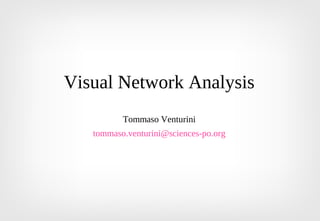Le document traite de l'analyse des réseaux complexes, en soulignant leur nature complexe et la distribution par loi de puissance. Il présente des méthodes de visualisation des réseaux à l'aide de Gephi et propose des questions pour analyser les débats en ligne et les communautés discursives au sein de ces réseaux. Les sections incluent des considérations sur la connectivité, la structure des réseaux et des outils pour rendre ces réseaux plus lisibles.

















































